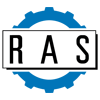With such a big decision to be made, we’ve developed six key steps to help you make informed choices during the capital equipment purchasing journey. Following our key steps in the capital purchasing process can assist you in making a more informed decision about the type of equipment you add to your roster.
1. Plan Ahead
Before you begin the process of researching, selecting, and purchasing capital equipment, you should be prepared with a plan. This will help determine the important factors you want to consider while choosing the appropriate equipment. Creating this plan includes understanding several aspects of your business:
- Your needs: What are they? What equipment will help you achieve them?
- Your budget: how much can you spend on a capital purchase? How much is allocated in the budget for this decision?
- Company growth plans: where will this equipment take your company in the future? What changes or goals do you anticipate for your business with this purchase, and how can it help you succeed?
2. Test the Equipment
If you are able, take advantage of manufacturer events like conventions or trade shows where equipment is on display. On-site demos are also possible in many suppliers’ facilities. See how the equipment works and looks to understand how it will suit your business.
If you are not able to see the equipment in person, find manufacturers who post videos of their equipment online, like RAS Systems’ videos of our various folding, bending, and cutting machines.
3. Determine What is Included in the Cost
Make sure the equipment has all the tools that you are looking for. If not, see if the manufacturer has a variety of models to choose from that can better suit your needs, or see if there are additional add-ons that can be included.
A new piece of equipment usually has a warranty of one year, and sometimes includes maintenance or service agreements for a certain period after purchase. Most equipment manufacturers also offer remote or in-person training for employees on their equipment. Take advantage of training, and if it isn’t offered request to pay for it to ensure optimal use of your capital purchase.
4. Consider Used Equipment
If you’re looking for a non-custom built machine, buying used is a good way to save money. Most equipment is built to last several years, so even if you’re buying a five-year-old machine, you can still have 10-15 years of use before it begins to wear down.
If purchasing used, be sure to determine what warranties and/or service tools manufacturers offer, if any, and consider that in your purchase decision as well.
5. Determine How You Will Purchase Your Capital Equipment
Expensive equipment is not purchased with a single decision. Determine where you will be getting the money for this equipment, such as government grants, loans, and leases, or financing your costs. Be aware of the pros and cons of each purchasing method before making your decision, and make sure your method supports your company in the long term.
6. Think of Your Business Future
When determining what piece of equipment you purchase, think ahead to the future of your business. Be sure to purchase equipment with a digital base – equipment that connects to IoT can be an asset to your company as more progressive steps are made in technology.
Purchasing advanced technology keeps you ahead of your competition and lets your clients see you as a forward-thinking company.
If you follow these steps, you’ll be well on your way to purchasing the best capital equipment to meet your company’s needs. Remember that with proper planning, you can make sure your business has what it needs to succeed.
If you’re looking to purchase a new or used sheet metal folding, bending, or cutting machine, contact RAS Systems today or request a quote to see how we can help you throughout the process.
Founded in 1939, RAS builds metal bending, cutting, and forming equipment, as well as fabrication software, and is known for its high quality, reliability, and accuracies.

Recent Comments